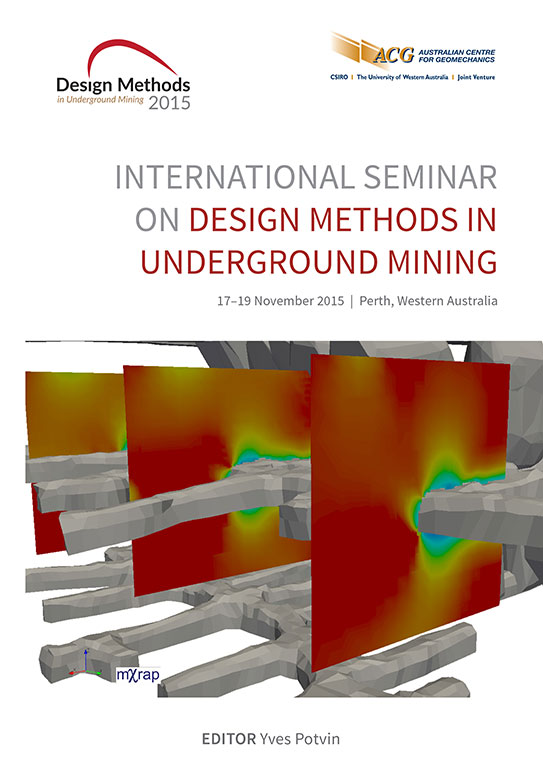Defining the role of elastic modelling in underground mine design

|
Authors: Barsanti, BJ; Basson, FRP |
DOI https://doi.org/10.36487/ACG_rep/1511_03_Barsanti
Cite As:
Barsanti, BJ & Basson, FRP 2015, 'Defining the role of elastic modelling in underground mine design', in Y Potvin (ed.), Design Methods 2015: Proceedings of the International Seminar on Design Methods in Underground Mining, Australian Centre for Geomechanics, Perth, pp. 107-119, https://doi.org/10.36487/ACG_rep/1511_03_Barsanti
Abstract:
Finding the most appropriate way to use elastic modelling results in a production environment is sometimes challenging. Many design criteria are available, but have to be used within the context of the failure mechanism and the correct field stress. Some design criteria require the explicit modelling of nearby excavations, but others do not. This distinction is important, but often overlooked in numerical analysis. Establishing correlations between modelling results and observations (or measurements) are crucial to confidently use stress results for predictions, but seldom achieved. Many times correlations do exist, but not exposed due to ineffective observation techniques and a poorly selected design criterion. The final challenge in the numerical modelling process is to present the results and interpreted outcomes to mine management and planning engineers in a clear and concise manner. An effective communication technique is important but often overlooked, which can impact hugely on the understanding of the given advice. This paper shares the authors’ learnings on the above after being confronted with these questions many times during their careers. They aim to transfer their combined experience and selected techniques with case studies.
References:
Louchnikov, V 2011, ‘Simple calibration of the extension strain criterion for its use in numerical modelling', in Y Potvin (ed.) Proceedings of the Fourth International Seminar on Strategic versus Tactical Approaches in Mining, Australian Centre for Geomechanics, Perth, pp. 85-96.
Ozbay, MU, Ryder, JA & Jager, AJ 1995, ‘The design of pillar systems as practiced in shallow hard-rock tabular mines in South Africa’, Journal of the South African Institute of Mining and Metallurgy, pp. 7-18.
Sandy, MP, Sharrock, G, Albrecht, J & Vakili, A 2010, ‘Managing the transition from low stress to high stress conditions’, Proceedings of the Second Australasian Ground Control in Mining Conference, The Australasian Institute of Mining and Metallurgy, Melbourne.
Stacey, TR 1981, ‘A simple extension strain criterion for fracture of brittle rock’, International Journal of Rock Mechanics and Mining Sciences & Geomechanics Abstracts, vol. 18, no. 6, pp. 469-474.
© Copyright 2025, Australian Centre for Geomechanics (ACG), The University of Western Australia. All rights reserved.
View copyright/legal information
Please direct any queries or error reports to repository-acg@uwa.edu.au
View copyright/legal information
Please direct any queries or error reports to repository-acg@uwa.edu.au